2025 Area IV Envirothon - Water Quality & CEE #5
1/113
There's no tags or description
Looks like no tags are added yet.
Name | Mastery | Learn | Test | Matching | Spaced |
|---|
No study sessions yet.
114 Terms
Evaporation
Occurs when liquid water turns to gas. There is always some vapor in the atmosphere.
Condensation
Water vapor changes into liquid water that condenses to form dew, fog, or clouds.
Most active cloud-forming particles
Sea salts, atmospheric ions caused by lightening, and combustion products containing sulfurous and nitrous acids.
Interception
Occurs when vegetal cover or depressions in the land interrupt the movement of water in the transportation events leading to streams.
Percolation
Movement of water in soil by gravity and capillary forces.
Vadose water
Water in the zone of aeration.
Groundwater
Water in the zone of saturation.
Transpiration (definition and purpose)
Water in plants is transferred from the plant to the atmosphere through leaf openings. Plants use this to move nutrients and cool leaves.
Impact of increased salinity
Negative impacts on soil structure, fertility, and plant growth.
Watershed
An area of land that drains all the streams and rainfall to a common outlet such as the outflow of a reservoir, mouth of a bay, or any point on stream channels.
Drainage divide
Ridges and hills that separate two watersheds.
Characteristics that control the amount of infiltration
Soil characteristics, soil saturation, ground cover, and slope.
1st - 3rd order streams
Headwater streams.
4th - 6th order streams
Medium streams
>7th order streams
River
Grab samples
Most common method for water missions. Give a snapshot of the water quality at a specific time and place.
Composite samples
Multiple samples taken over a period of time or at regular intervals.
Guidelines for water sampling at an open lake or river
Collect water samples from a location that provides a representative sample. Usually middle of the source at mid-depth.
Guidelines for water sampling at valves or tap stands
Allow water to run for 5 - 10 seconds to flush the valve.
Guidelines for water sampling at boreholes
Needs to be representative of the groundwater, not stangent and should be flushed if it has a pump.
Guidelines for water sampling of existing water systems
Samples are taken from the source and endpoint of the system.
Whirlpacks
Used with chlorine treated samples to neutralize the chlorine. Generally just for microbial testing.
Sample Label
Community name, water source, date, and collection time.
Factors for high levels of oxygen in aquatic ecosystems
Daytime, algae, rooted plants, surface water, and oxygen from the atmosphere.
Thermocline
Barrier that prevents mixing of the upper layers with the lower layers, Defines the photic zone.
pH
Affects photosynthesis. Logorithmic, not linear. Phgoti
Photic zone
Area in which photosynthesis occurs.
Acid rain pH
<5
Liebig’s lawe of the minimum
Elements less than the limiting factor allows for more photosynthesis and algal growth.
Microphytes
Algae and rooted aquatic plants. Primary producers in lake ecosystems. 85% of biomass.
Primary Consumers
Eat producers. 10% of biomass.
Secondary Consumers
Eat primary consumers. 5% of biomass.
Phyto plankton
Free floating forms (little green dots).
Periphyton
Attach to surfaces. If they attach to macrophytes they are epiphytes.
Filamentous algae
Stringly, attaches to submerged objects. Sign of a highly productive lake.
Macrophyes
Large, rooted lake plants. Either bryophytes (mosses and liverworts) or vascular plants with stems.
Littoral zone
Plant habitat.
Limnetic
Open water.
Thermocline
Photosynthesis barrier.
Profundal
Deep water.
Zooplankton
Crustaceans and invertebrates.
Water withdrawal
Agricultural irrigation. Results in less space, dissolved oxygen, food, and habitat.
Steps of biological water quality testing
Site selection, sampling organisms, habitat assessment, lab analysis, and biological indices.
Bio assessment - Defining goals for bodies of water
Information on one natural aquatic ecosystem can provide an idea of the expected conditions for other similar bodies of water.
Biological assessment
An evaluation of a waterbody’s health based on the structure and function of its biota.
Sampling techniques for bio assessment
Standardized field methods include kick nets, electrofishing, etc. Usually includes multiple habitat types, often paired with chemical testing.
Biologic indicators
Composition and abundance of species, pollution sensitive vs tolerant, signs of organism stress, presence of invasive or non-native species.
Stressor ID and CADDIS
Tools used to determine probable causes of impairment when stressors are not immediately clear.
Biological condition gradient level 1
Natural/undisturbed
Biological condition gradient level 2
Slight change, sensitive impact.
Biological condition gradient level 3
Moderate changes, some sensitive species lost.
Biological condition gradient level 4
Major changes, mostly tolerant species remain.
Biological condition gradient level 5
Severe changes, ecosystem function is impaired.
Biological condition gradient level 6
Complete degradation.
Fen
Peat forming, alkaline, ground-water fed wetlands that are sedge dominated and rich in biodiversity.
Bogs
Acidic peatlands, sphagnum moss, highly conservative plants and animals.
Marshes
Open wetlands, seasonally or permanently wet, non-woody vegetation.
Vernal pools
Small and shallow forested pools. No established fish populations.
Shrub swamps
Seasonally to permanently wet depressions dominated by shrubs.
Swamp forests
Seasonally wet flatlands. Non-riverine and floodplain.
Wet meadows
Open, sedge dominated seasonally wet grasslands.
Wet praires
Similar to wet meadows but with grasses.
Sustainable forest management
Maintains and enhances the long term health of forest ecosystems for the benefit of all living things while providing environmental, economic, social, and cultural opportunities.
Annual Allowable Cut (AAC)
The volume of timber that can be harvested sustainably each year from provincial crown lands, as estimated by professional foresters.
Paris Agreement
A legally binding international treaty on climate change aimed at limiting global warming to well below 2 degrees Celsius above pre-industrial levels.
Kunming-Montreal Protocol
An agreement focused on biodiversity and sustainabile management of forests to enhance forest sustainability.
Climate Adaptation
Adjustments in natural or human systems in response to actual or expected climatic stimuli or their effects.
2023 Asia-Pacific Climate Week
Focused on addressing adaptation knowledge gaps and integrating traditional knowledge into climate action.
United Nations Framework Convention on Climate Change (UNCCC)
An international treaty aimed at addressing climate change.
Food and Agriculture Organization (FAO)
Provides guidelines and support for sustainable forest management practices globally.
ASEAN
Promotes cooperation in forestry among Southeat Asian Nations. Focuses on sustainable forest management and climate change.
Canada’s sustainable wood supply
215 million meters cubed
Industrial round wood harvested in 2021
147 million meters cubed (68% of sustainable supply).
Number of forest fires in 2023
5639
Area burned from forest fires
16543 square kilometers
Insect disturbance area
160,000 square kilometers
Climate change leading to hotter conditions results in…
More forest fires (and increased severity).
Deforestation leads to…
Increased global greenhouse gas emissions.
Paris Agreement leads to…
Countries having to submit Nationally Determined Contributions to reduce emissions and enhance resilience.
Insect outbreaks in forests lead to…
Disturbance of ecosystems and a reduction in timber supply.
Thalweg
The deepest part of a canyon. Primary navigable channel of a waterway. Often defines political and/or property boundaries in river law.
Benefits of wind for waterways
Improves circulation and natural aeration.
HABS
Harmful algal blooms. Presence and severity depends on nutrient loading from the watershed.
Pollution tolerance index
Measures stream health based on organisms’ tolerance to pollution.
Impact of urbanization on watersheds
Greater amount of impervious surfaces, resulting in larger flood events.
Most common non-point source pollutant
Silt
Only non-parastic lamprey
Least brook lamprey
Example of a primary consumer macroinvertebrate
Caddsfly
Cavity nesting birds
Wood ducks, prothonotary warblers, and common mergansers.
Macroinvertebrate used to perform rapid bio assessment
Stonefly, mayfly, and caddisfly.
Macroinvertebrate feeding habits
Shredders, collectors, grazers, and predators.
Causes of summer fish kills
Shallow ponds, thermal inversions, and chemical applications
Fish indices of warm water temperatures
Rainbow darter, small mouth bass, muskellunge, and the brindled madtom
Fish indices of cold water temperatures
Redside dace, brook stickleback, mottled sculpin, and the brook trout,
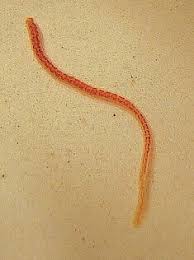
Tubifex Worm, Group 4
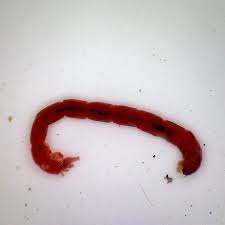
Bloodworm Midge Larva, Group 4
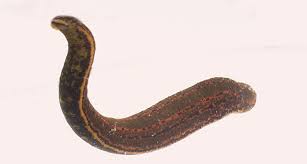
Leech, Group 4
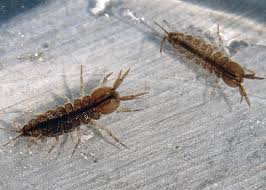
Aquatic sowbug, Group 4

Pouch snail, Group 4
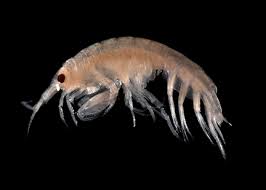
Scud, Group 3